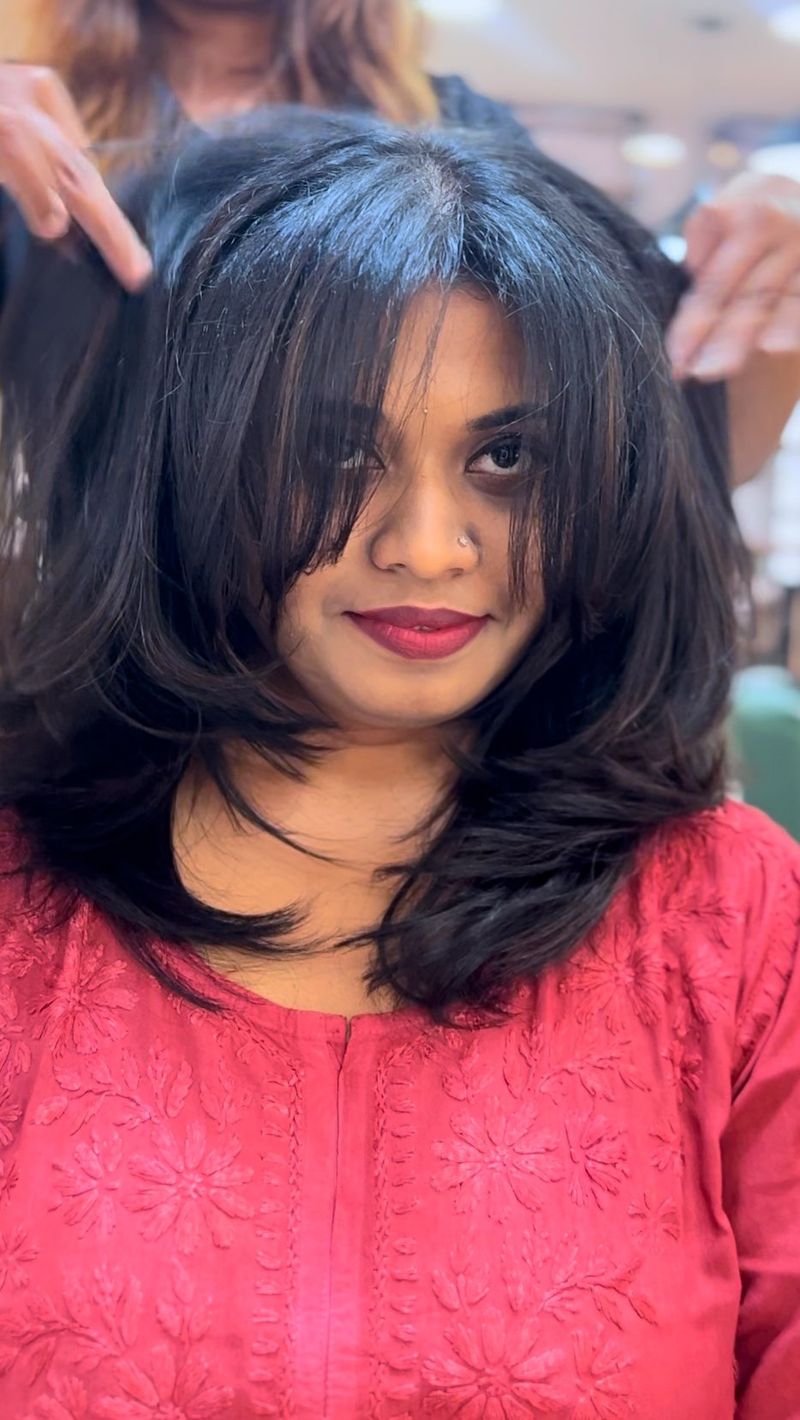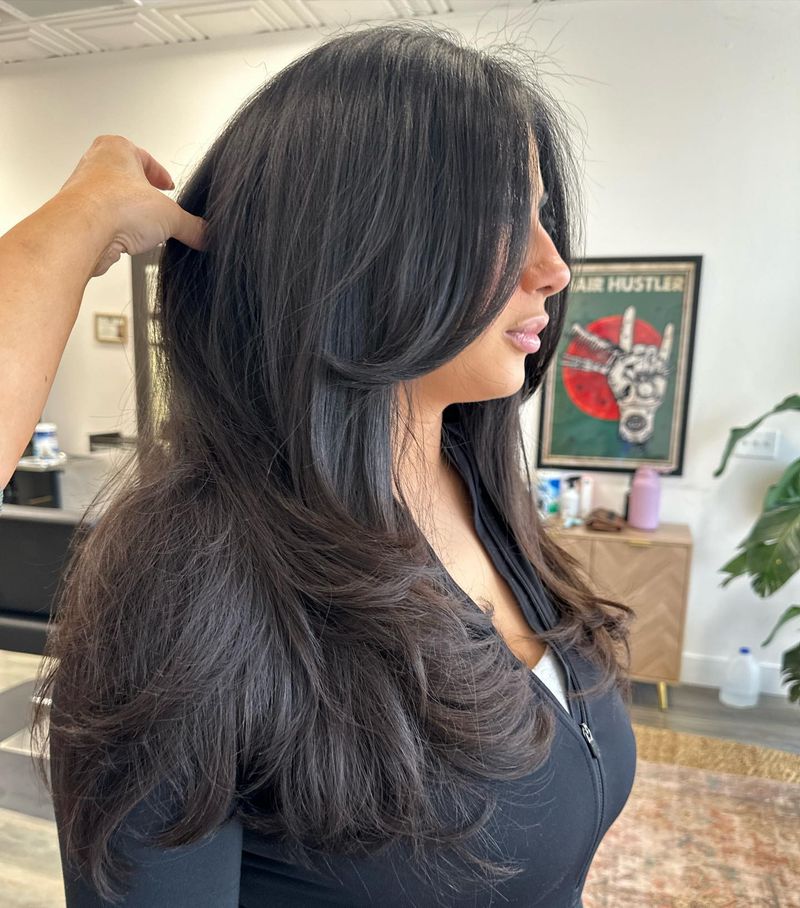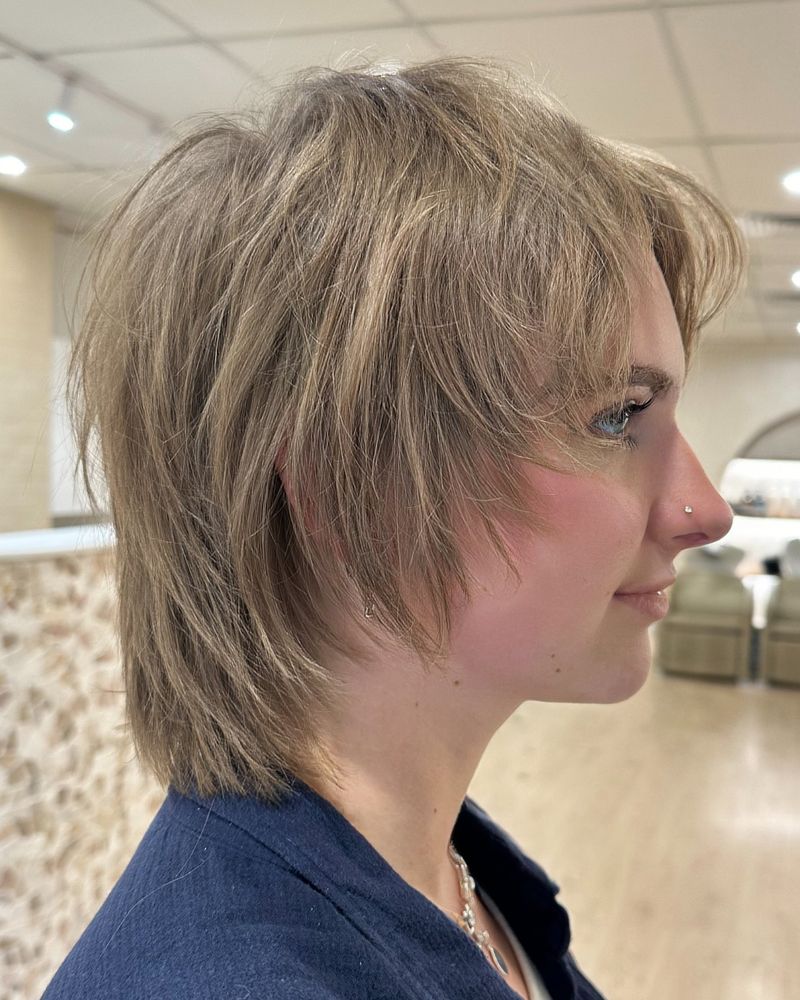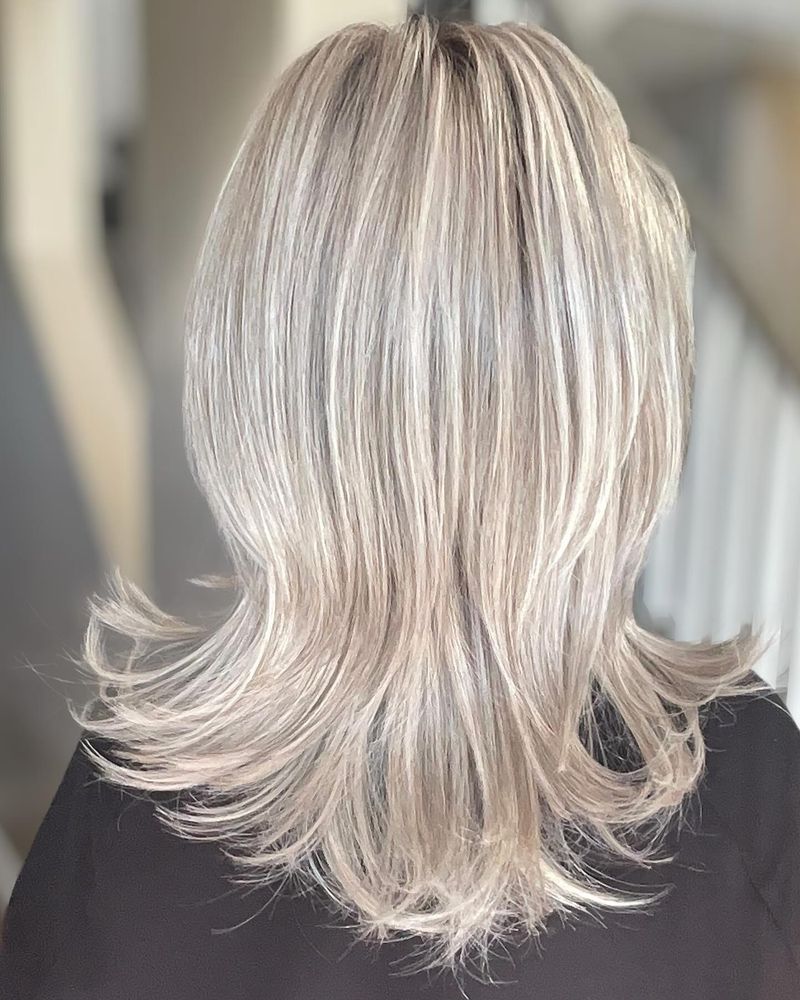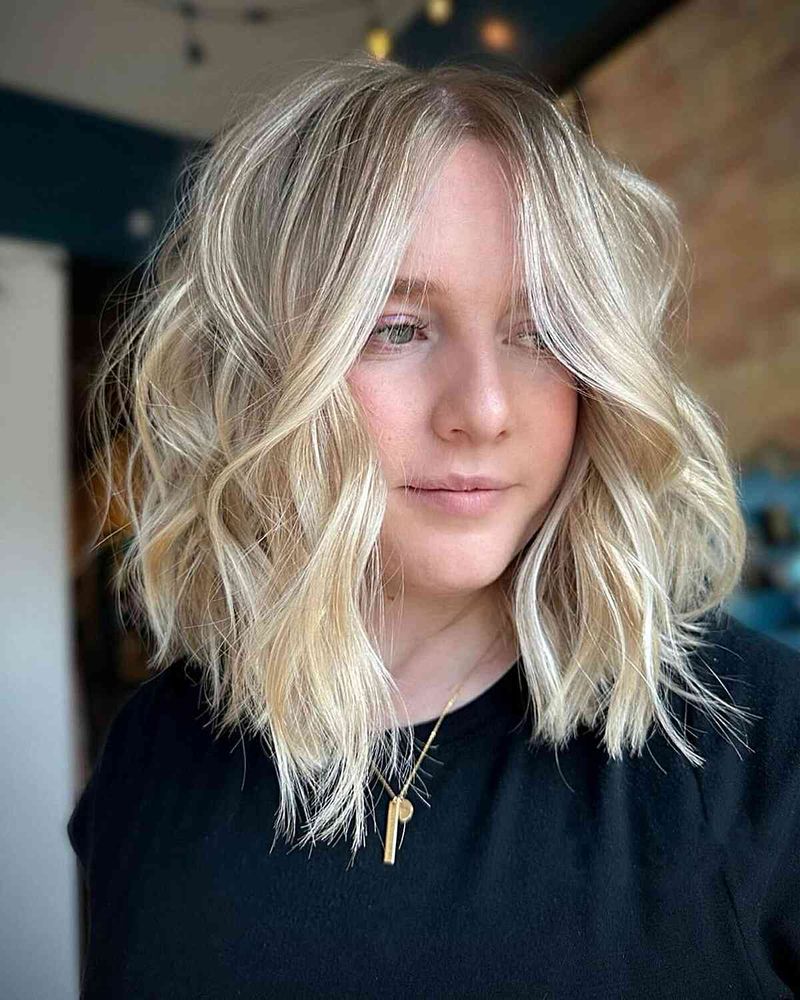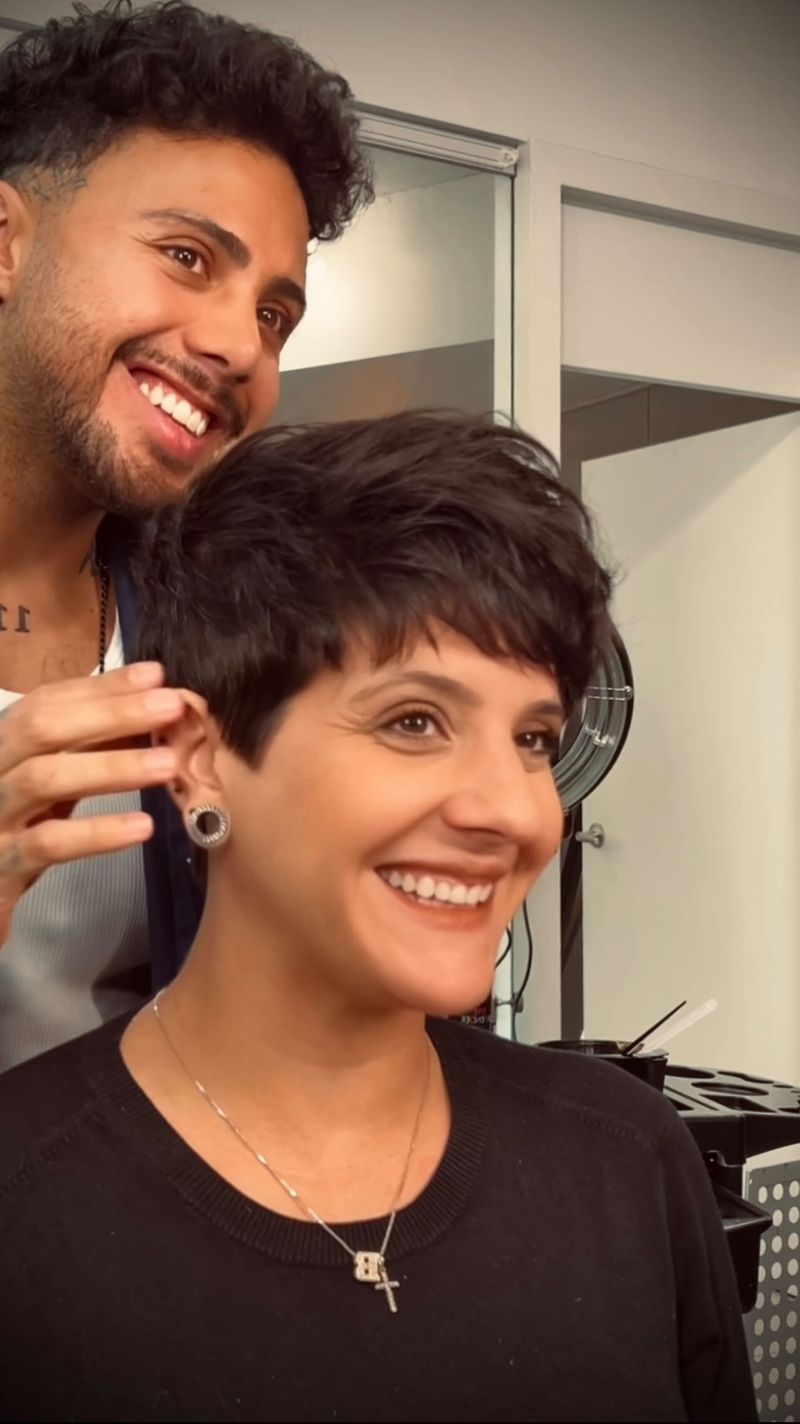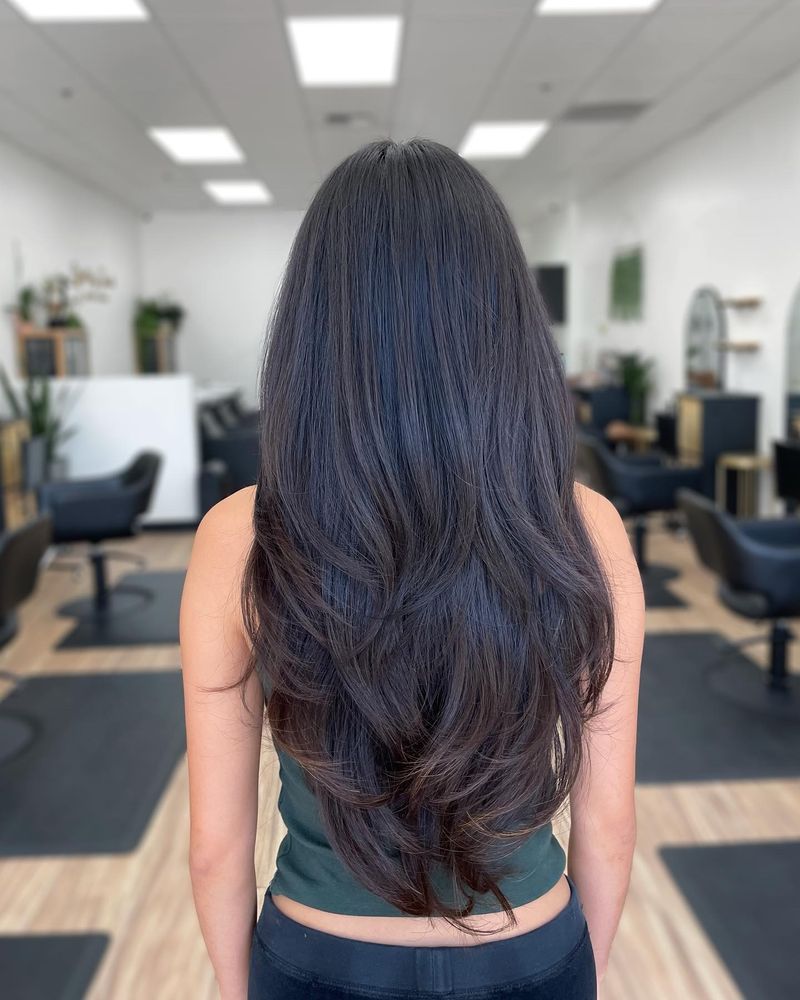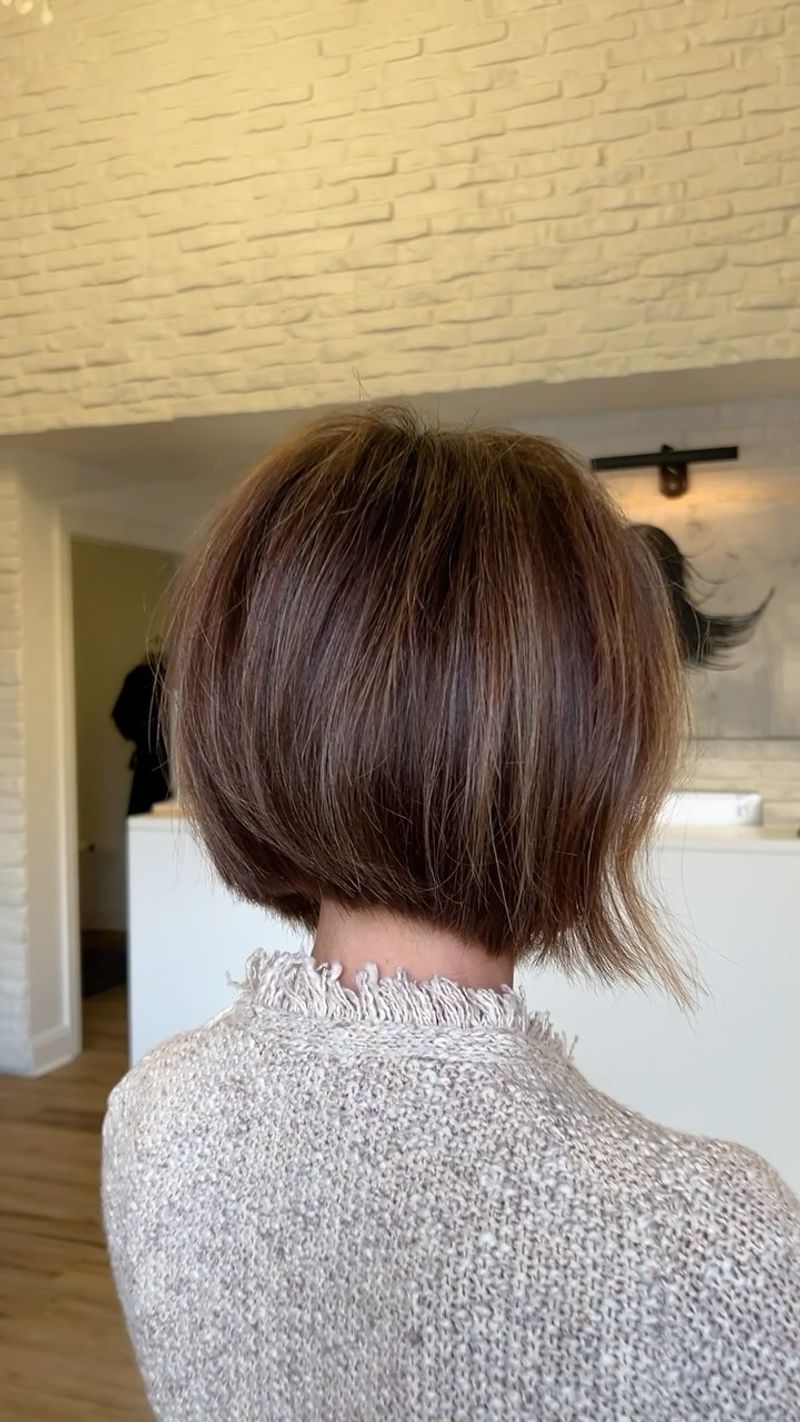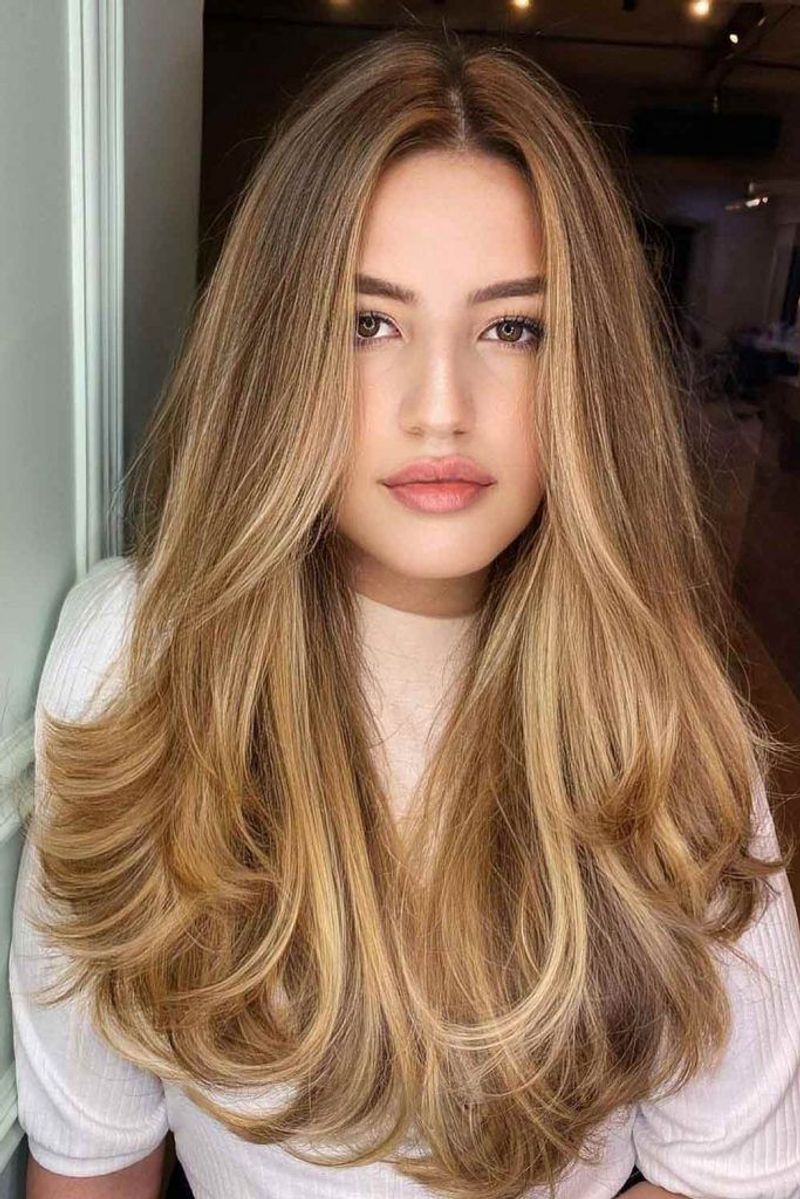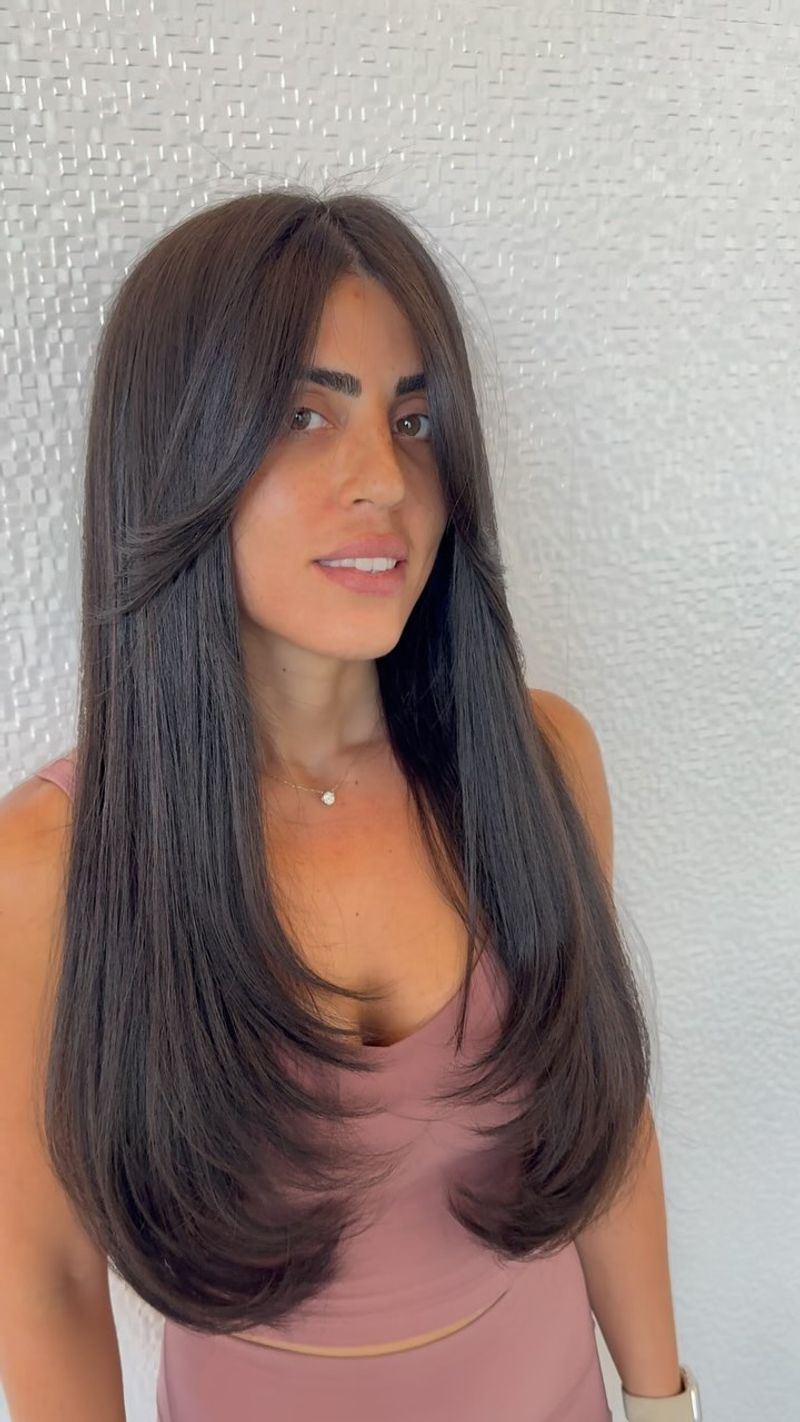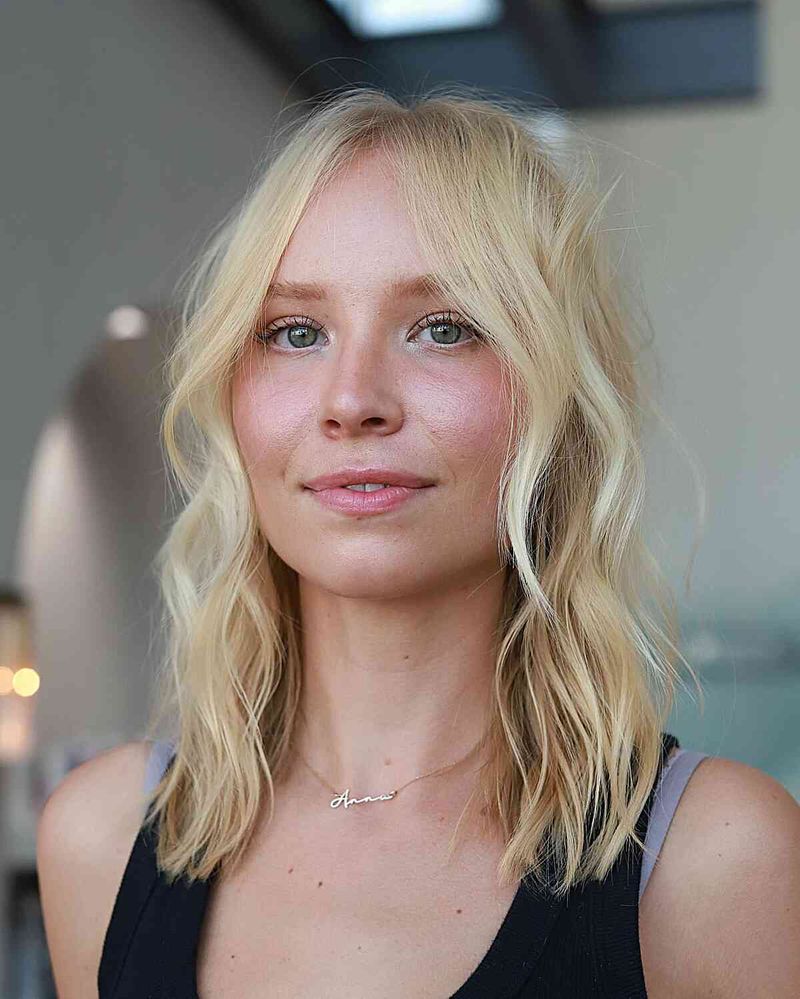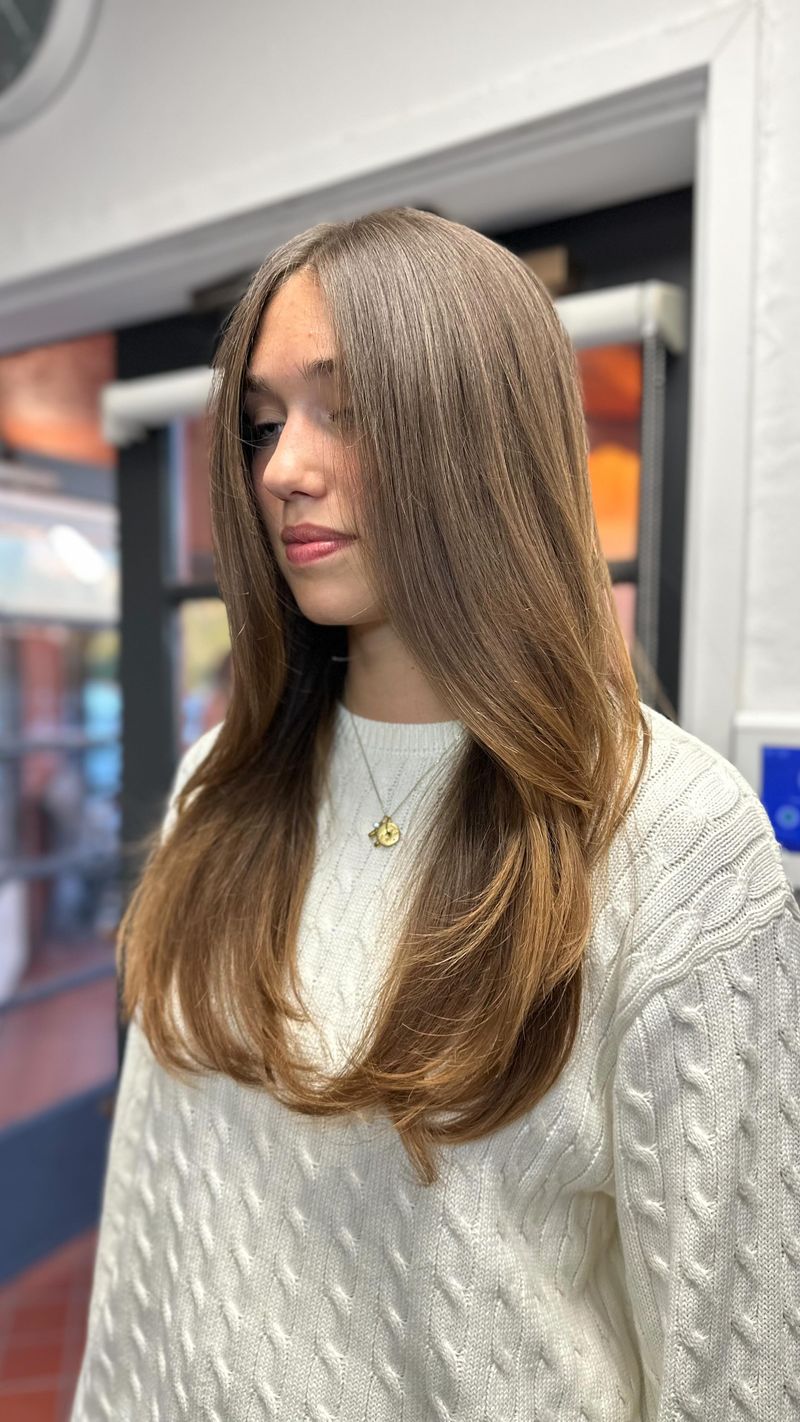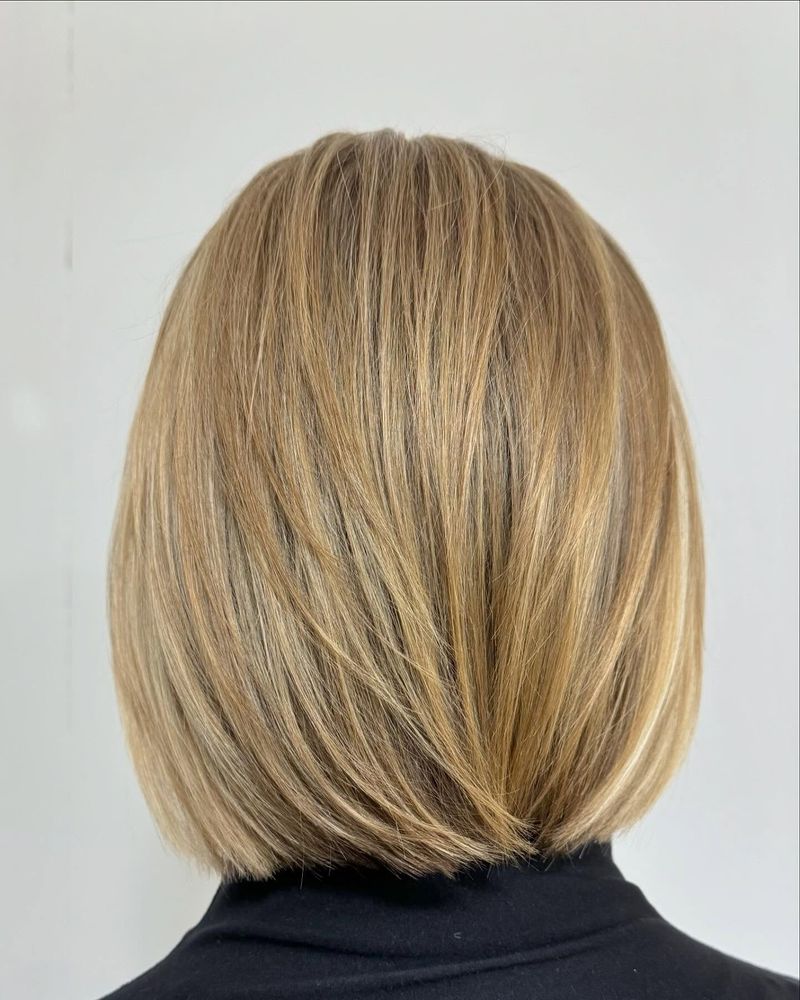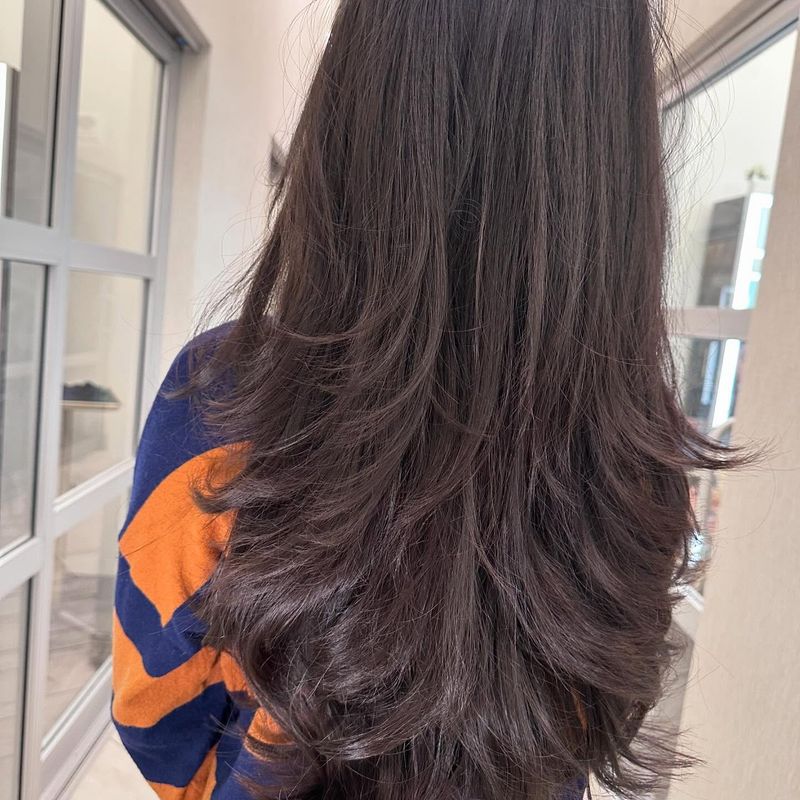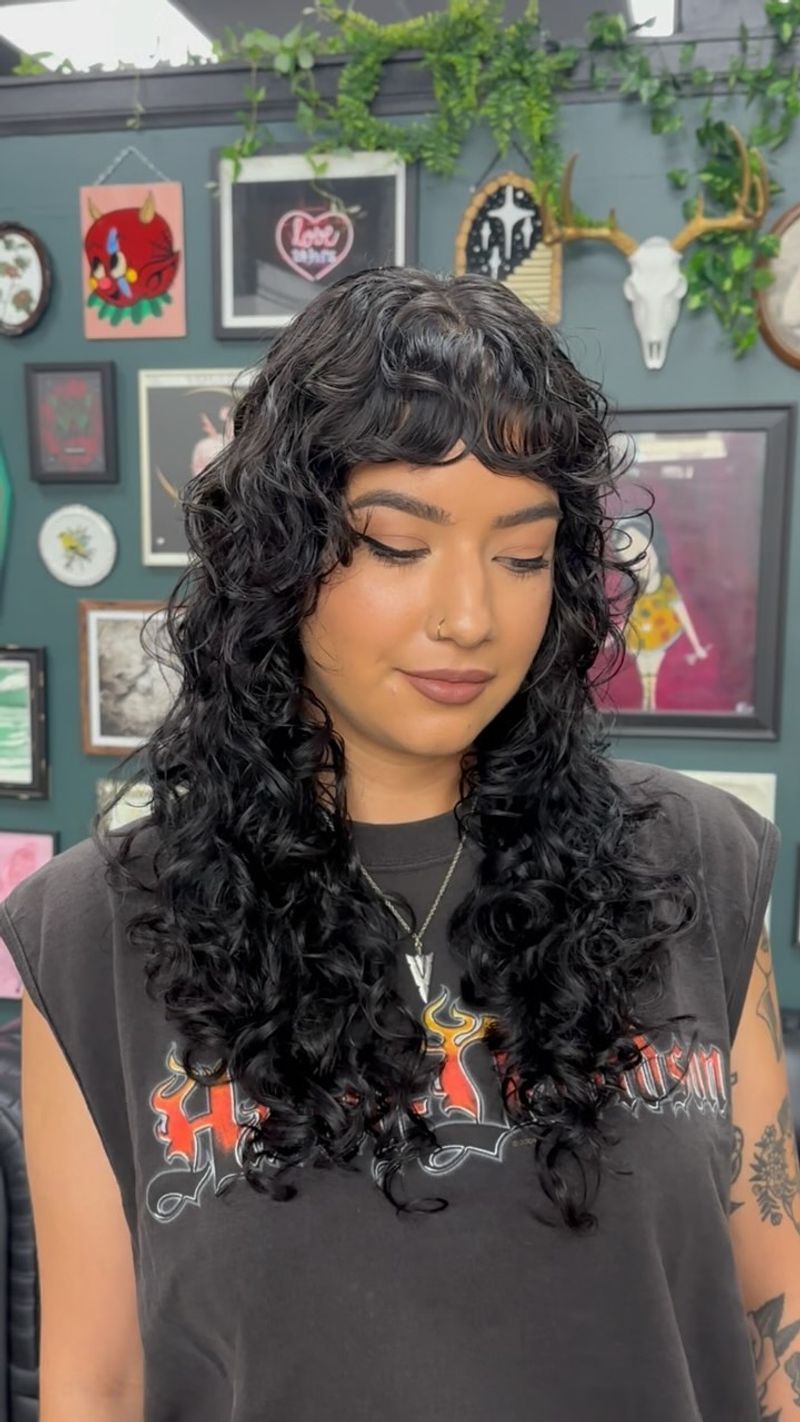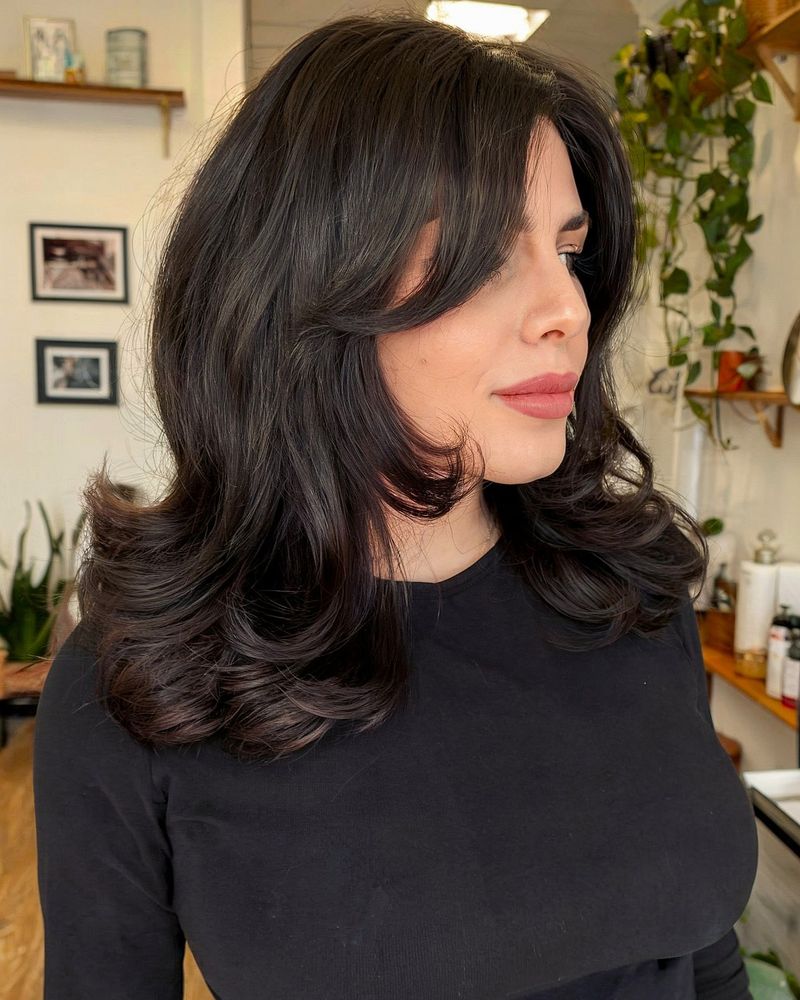17 Layered Haircuts That Fix Common Hair Problems
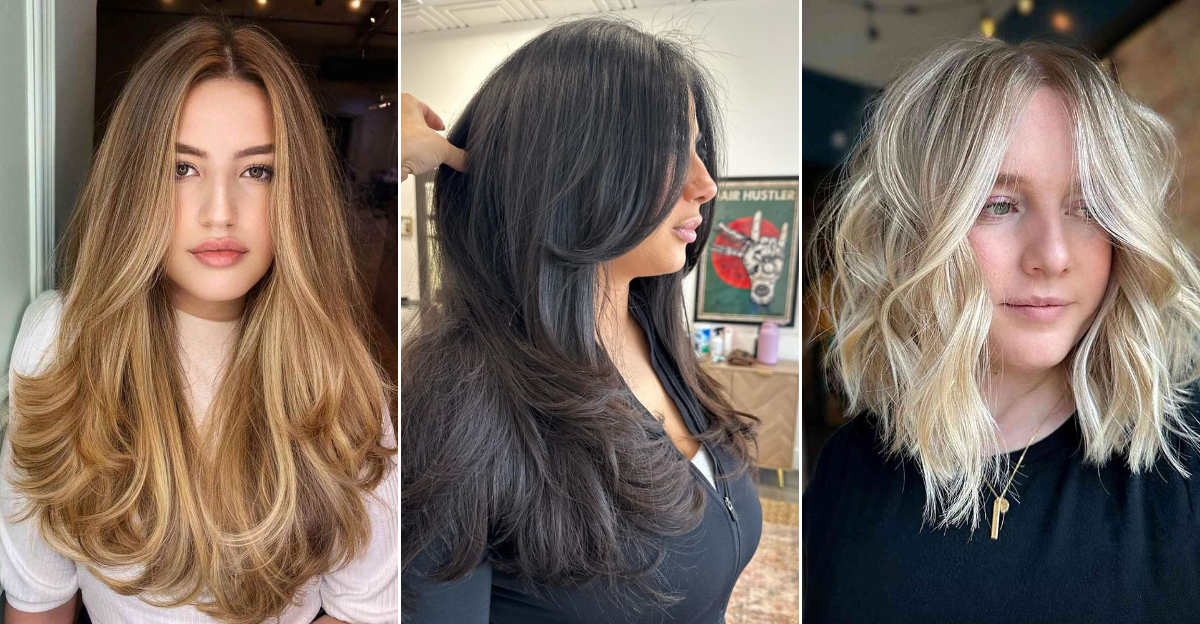
Bad hair days happen to everyone, but the right haircut can make them a thing of the past.
I’ve spent years helping clients transform their unmanageable locks into gorgeous, easy-to-style hair. The secret? Layers.
They’re not just about style—they’re problem solvers that work with your natural texture, face shape, and lifestyle. Here are my favorite layered cuts that tackle everything from flatness to frizz.
1. Face-Framing Layers
Struggling with a round face that needs definition? Face-framing layers create the illusion of length while highlighting your best features. The graduated pieces that cascade around your cheekbones and jaw break up fullness and draw attention to your eyes.
I recommend keeping the shortest layer no higher than your chin for maximum slimming effect. These strategic cuts work wonders for softening strong jawlines too.
My client Emma swore she’d never find a flattering cut for her round face until we tried this approach. Now she gets compliments daily! The beauty of face-framers is their versatility—they grow out gracefully, requiring fewer salon visits than more dramatic cuts.
2. Long Layers with Curtain Bangs
Forehead too high? Hair too heavy? The combination of long layers with curtain bangs addresses both issues brilliantly. The soft, parted fringe disguises forehead width while the layers remove bulk from thick hair.
What makes this cut special is how the bangs blend seamlessly into the layers, creating a cohesive look rather than two separate elements. The result feels effortless yet intentional.
My own hair transformed when I adopted this style. The layers give movement to otherwise flat strands, while the curtain bangs frame my face without the commitment of traditional straight-across bangs. For anyone with thick hair who wants something lighter but still long, this might be your hair soulmate.
3. Shaggy Layers
Flat, lifeless hair gets an instant boost with shaggy layers. This cut creates natural volume through strategic shorter pieces throughout the crown and mid-lengths. The choppy, textured effect makes fine hair look twice as thick.
The magic happens because each layer supports the one above it, creating a scaffolding effect that prevents collapse. I love how this cut brings personality to otherwise boring hair.
My client Sarah came in with hair that stuck to her head despite her best efforts with volumizing products. After cutting shaggy layers, she texted me the next morning saying she finally had that bedhead volume she’d always wanted. The best part? This style actually looks better slightly messy, making it perfect for busy mornings.
4. Feathered Bob
Dealing with thick, unmanageable hair? A feathered bob might be your solution. The feathering technique removes weight while creating movement, making styling a breeze even for those with stubborn locks.
Unlike blunt bobs that can poof out with thick hair, feathered edges collapse inward, creating that coveted swing when you turn your head. The layers are subtle—almost invisible—but make all the difference in how the hair behaves.
My thick-haired clients often arrive frustrated after trying various products to tame their manes. Once we switch to a feathered bob, they’re amazed at how quickly they can style their hair. The length hitting somewhere between chin and shoulders provides the perfect balance of sophistication and playfulness while keeping morning routines simple.
5. Choppy Lob
The choppy lob (long bob) works wonders for those stuck between wanting short hair’s ease and long hair’s versatility. The uneven, textured ends create the illusion of thickness for fine hair while reducing bulk in thick hair—truly the best of both worlds.
What sets this apart from regular lobs is the point-cutting technique used to create those piece-y ends. They move freely instead of forming a solid shape, giving that cool-girl vibe without trying too hard.
My friend Rachel switched to this cut after years of struggling with limp, shoulder-length hair. The choppy layers throughout gave her strands the texture and body she’d been missing. For those worried about growing out a short cut, the choppy lob serves as the perfect transition style, looking intentional at every stage.
6. Layered Pixie Cut
Contrary to popular belief, pixie cuts aren’t one-size-fits-all. A layered pixie addresses common concerns like cowlicks and thick hair by incorporating varied lengths that work with—not against—your natural growth patterns.
The longer pieces on top provide styling flexibility while the tapered sides keep things neat. This variation makes all the difference for those who tried traditional pixies only to find them unflattering.
My client Maria had always wanted to go short but worried about her strong cowlick and round face. We designed a layered pixie with extra length on top and at the crown, allowing her to direct hair away from problem areas. She now spends five minutes on her hair instead of thirty, proving that short doesn’t have to mean limiting. The layers create dimension that flatters her face shape better than any long style ever did.
7. V-Cut Layers
For those battling the triangle effect—where hair appears wider at the bottom than at the top—V-cut layers are the solution. This technique creates a V-shape at the back, removing bulk from the sides while maintaining length.
The graduated layers start subtle at the crown and get longer toward the ends, creating a waterfall effect. This structure prevents hair from expanding outward at the bottom, instead directing it downward in a flattering shape.
My client with thick, wavy hair struggled with pyramid-shaped styles until we tried V-cut layers. She was shocked at how much more manageable her morning routine became. Even better, these layers grow out beautifully, meaning less maintenance and fewer salon visits. For anyone with heavy or triangular hair, this cutting pattern redistributes weight in the most flattering way possible.
8. U-Cut Layers
Fine-haired folks often avoid layers, fearing they’ll lose precious volume. U-cut layers solve this problem by preserving thickness at the ends while adding subtle movement. The U-shaped outline maintains a full perimeter while the interior layers create lift.
Unlike traditional layers that can make fine hair look scraggly, this technique concentrates the shortest layers near the crown where you need volume most. The longest pieces form a U-shape at the back, creating the illusion of thickness.
My sister always complained about her fine, straight hair until switching to this cut. She was amazed that layers could actually make her hair look thicker instead of thinner. The U-cut works especially well for those who wear their hair down frequently, as the shape is most visible in its natural state. It’s proof that even the finest hair can have both movement and substance.
9. Wispy Layers
Thick, heavy hair can feel like wearing a hat sometimes. Wispy layers provide relief by removing interior weight without changing the overall shape. The hair appears the same length but feels pounds lighter.
The technique involves point-cutting into the interior of the hair rather than creating obvious steps. This creates movement and bounce while maintaining a clean outline.
After cutting wispy layers into my client’s dense hair, she called me the next day saying she’d forgotten what it felt like to have her hair move when she walked. These subtle layers make thick hair more responsive to styling too—curls hold better and straight styles have more swing. For anyone who loves their length but hates the heaviness, wispy layers offer the perfect compromise between keeping your inches and gaining lightness.
10. Layered Cut with Side-Swept Bangs
Large foreheads or uneven features? A layered cut with side-swept bangs creates balance while disguising problem areas. The diagonal line of the bangs draws attention across the face rather than highlighting any single feature.
The key is connecting those side-swept bangs to face-framing layers for a seamless blend. This creates a soft curtain that can be adjusted to show more or less of your face depending on your comfort level.
My client with a prominent forehead tried this style after years of center parts that emphasized her insecurity. The transformation wasn’t just physical—her confidence soared when she realized how the right cut could work with her features instead of against them. Side-swept bangs offer more versatility than straight-across options too, as they can be pinned back on days when you want a different look.
11. Crown-Boosting Layers
Flat roots making you reach for the dry shampoo daily? Crown-boosting layers create natural lift at the top of the head where volume matters most. These strategic shorter pieces support themselves, eliminating the dreaded collapse.
Unlike old-school 80s layers, modern crown layers are subtle and blended. They work with your natural growth patterns to create height without obvious steps or choppiness.
My client with super-straight, fine hair was skeptical that any cut could give her lasting volume. After cutting crown-boosting layers, she texted me a week later saying she hadn’t used her volumizing products once. The structure created by these layers does the heavy lifting, requiring minimal styling effort. For anyone tired of backcombing or constantly washing limp roots, this targeted layering technique might be the game-changer you’ve been seeking.
12. Step Layers
Curly hair that forms a triangle? Step layers break up that dreaded pyramid shape by creating deliberate “steps” of length throughout the hair. Each layer has a clear definition, preventing curls from clumping into a bottom-heavy shape.
Unlike subtle layers that can disappear in curly hair, step layers make a statement. They redirect volume to the areas where you want it, usually around the face and crown, while removing it from places you don’t.
My curly-haired client came in frustrated that her hair only had shape when wet but puffed into a triangle when dry. Step layers gave her curls room to spring up evenly throughout, creating a balanced silhouette. This technique works particularly well for tight curl patterns that resist subtle layering approaches. The clear definition between lengths allows each curl to shine individually rather than merging into one solid mass.
13. Invisible Layers
Commitment-phobes, listen up! Invisible layers add movement without sacrificing length or dramatically changing your look. This technique removes bulk from underneath while maintaining the perimeter, resulting in hair that moves better but looks the same length.
The stylist cuts shorter pieces that hide beneath the surface, creating internal movement that’s revealed only when the hair moves. It’s the perfect solution for those who want change without shocking their friends.
My long-haired client resisted layers for years, fearing the “Rachel” look from Friends. When I suggested invisible layers, she reluctantly agreed. Afterward, she couldn’t believe the difference in how her hair felt and moved while still looking like the long locks she loved. This approach works especially well for fine hair types worried about losing precious density, as the surface remains intact while gaining much-needed movement underneath.
14. Fine Hair Rescue Layers
Fine hair presents unique challenges—too many layers make it look stringy, too few leave it flat. Fine hair rescue layers strike the perfect balance by concentrating texture at the crown and ends only, preserving precious midlength density.
This specialized technique avoids removing bulk through the middle sections where fine hair needs all the help it can get. Instead, strategic points are texturized to create movement without sacrificing substance.
My sister-in-law with baby-fine hair tried everything from extensions to teasing before finding this approach. The transformation was subtle but significant—her hair finally had personality without looking thinner. These specialized layers work best when combined with a blunt perimeter that maintains maximum density at the ends. For those who thought layers weren’t for fine hair, this targeted approach proves that the right technique can work for any hair type.
15. Razor-Cut Layers
Stubborn, coarse hair that refuses to move? Razor-cut layers might be your answer. Unlike scissors that create blunt ends, razors slice through hair at an angle, creating wispy, moveable pieces that reduce bulk without obvious layers.
The technique thins out the ends rather than creating steps, resulting in hair that moves freely but maintains its length. For thick, straight hair especially, this can be transformative.
My client with coarse Asian hair struggled with stiffness until trying razor layers. The difference was immediate—her previously board-straight hair suddenly had life and movement. This approach works particularly well for those who wear their hair in simple styles, as the textured ends create interest without requiring much styling. Just note that razor cutting isn’t suitable for very curly or already-damaged hair, as it can increase frizz in these types.
16. Curly Layered Cut
Curly hair that’s one length often lacks definition and feels heavy. A properly layered curly cut releases your natural pattern by removing weight that pulls curls down. Each ringlet gets room to form its natural shape.
The key difference from traditional layering is that curly layers are cut dry, in their natural state. This allows the stylist to see exactly how each curl behaves and customize accordingly.
My client with 3B curls came in with hair that curled beautifully at the ends but lay flat at the roots. After cutting strategic layers throughout, her entire head sprung into perfect spirals. The transformation often brings tears to first-timers’ eyes when they realize their “difficult” hair was just cut wrong all along. For those who’ve fought their curls for years, the right layering technique can finally make peace between you and your natural texture.
17. Medium Layers with Flipped Ends
Bored with your current style? Medium layers with flipped ends offer instant personality without dramatic change. The subtle layers through the mid-lengths create movement while the flipped ends add playful bounce to an otherwise conservative cut.
This style works because the layers are long enough to still pull into a ponytail but short enough to create visible movement. The flipped ends can be styled outward for a retro feel or inward for a more sophisticated look.
My colleague switched to this cut after years of the same blunt lob. She was surprised by how much more versatile her morning styling routine became with just a few strategic layers. This approach works particularly well for those transitioning from a one-length cut to more layered styles, as it introduces movement gradually without shocking the system. It’s the haircut equivalent of dipping your toe in before diving into the pool.

